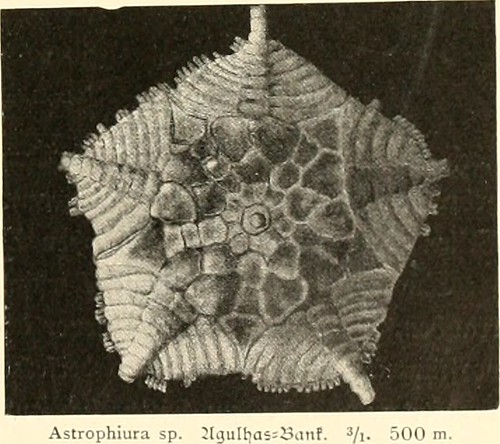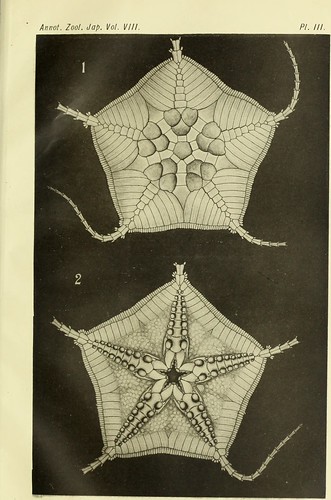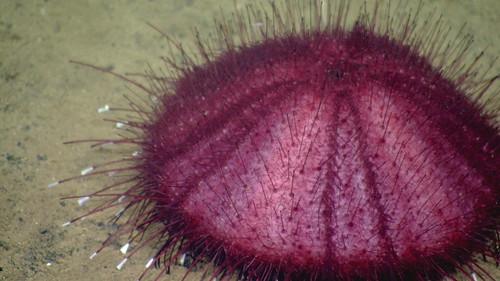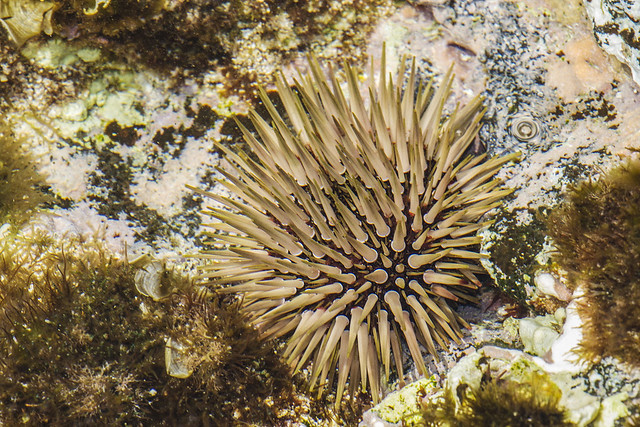I'm BACK! After a month at sea with 2.5 weeks worth of dives I've safely returned to "home base" in Washington DC! I was out in the central Pacific with NOAA's R/V Okeanos Explorer on their Laulima O Ka Moana expedition, exploring the deep-sea of the Marine National Monument in the Central Pacific!
1. Forest of the Weird: Land of the Glass Sponges!
This was probably the most amazing thing I have seen in awhile! (at least since that Basket Star community in the Marianas a few years ago!)
So, the key thing about nearly ALL Of these sponges? Many of them are what's called GLASS SPONGES aka members of the Hexactinellida. That means they have bodies which are made out of silicon oxide!
These often have bizarre and weird shapes. I have done a post about these before here in 2015.
Here's a highlight video of the discovery-basically water currents ran at an ideal rate at the top of this geologic feature making it IDEAL for what seems to be a huge abundance, if moderate diversity of glass sponge species!
Note also how all of them are turned into the current!! We were in this "forest of the weird" for the remainder of the dive (over an hour) so there was quite a lot of it..
Here's few more that show off the crazy architecture.. These varied in height from one to four feet in height..
2. The Carnivorous Sponge Field
This area was kind of the opposite to the one above. Rather than big and obvious, it was quite dense and discontinuous, being present on one big boulder to another...
...that they are CARNIVOROUS!!!
Wait.. WHAT? Yup. MOST sponges are filter feeders. But in this group, they use glue or spines to capture prey, which are then digested by the animal in question. We've seen different types of these carnivorous sponges before, including some possible new species.. These sponges kind of look like a feather.. a central stalk with fine hairs or spines coming off the sides
Similar to this species in the NOAA benthic inverts guide...
Here..they were present in HUGE densities.. alongside some frond-like bryozoans! and some stoloniferous zoanthids (a sea anemone like cnidarian) These actually seemed to be pretty thin at first but got bigger, longer and thicker as we encountered them!
Yes.. I suppose I'm overhyping them..but that's basically a "killing field" of carnivorous sponges! with these projecting into the
Interestingly, this shot above looks like there might be a snail on one of those sponges..so even more going on!
3. This Amazing Farreid Sponge/Acanthogorgia Wall!
Shallow-water dives can be VERY productive but because of the nature of Okeanos Explorer we tend not to do many of them relative to the really deep dives (>1000 m).
The one we did at Johnston Atoll did NOT disappoint!
This large block and several like it had this AMAZING side flanked on one side by sponges in the Farreidae, but then on another side covered by octocorals in the genus Acanthogorgia!
versus the "sponge side" which was relatively low current...

and many critters were to be found amongst the corals (such as this... sea slug)
3. Astrophiura! the "sea star ophiuroid" Probably one of the MOST memorable observations for me OUTSIDE of the starfishes was this weird little brittle star!
One of the videographers, Bob, saw it adjacent to the base of one of the sponges. And there it was plain as day!
These animals are TINY. Maybe dime sized. So, the D2 camera's caught a really RARELY ENCOUNTERED and SMALL species.. (about 2000 m depth)
This genus of brittle star was described in the 19th Century by Walter Percy Sladen, the author of the HMS Challenger sea star monograph. He hypothesized that it was some kind of "missing link" between brittle stars and sea stars... (since been disproven)
Here is some imagery of as illustrated by H. Matsumoto.. It has rather famously been shown in echinoderm books as an example of a bizarre form. Its shape is very similar to those caymanostellids and is thought to be an adaptation to lying flush on the substrate..
Astrophiura kawamnrai n. sp.


4. Pumpkin Sized Echinothuriids Sea urchins!
This dive started out pretty uneventfully up slope along a cone, resulting in the discovery of a pretty amazing colony of plexaurid corals
As I've mentioned with some of the OTHER high density communities- not only were there corals present but LOTS of other animals living among them..
One of the most remarkable? These HUGE echinothuriid urchins!! For those who might not be familiar.. these are aka "pancake" or "tam o shanter" urchins. You can see more about them here (with links therein).
Basically, these are soft-bodied sea urchins which often have poisonous spines and little walking legs.
But the ones we saw on this peak? just ENORMOUS.
The lasers are 10cm across,(about 4 inches)..so, okay this one is only about 8 inches across
but we panned across to another ledge and found a few more...
This darker brown one ended up being about 2 laser lengths..so about 8 inches across! that's basically the size of a small pumpkin! do they get bigger?Wikipedia lists the "largest" species at 14 inches (36 cm) but did not elaborate on species..(will need to check). But if that's the upper limit, then 8 inches is definitely monstrous!
This one was quite a surprise, because I had largely thought that sea slugs were limited to relatively shallow depths, much less PROPER nudibranchs which are overwhelmingly found in nearshore settings.
This looked pretty bigh on camera and was about 5 inches long? when we collected it..
Amazingly, there is one genus of proper nudibranch in not only the Antarctic but in the deep-sea: Bathydoris! I'm not sure quite yet what they eat but will find out!
Colleagues at the Monterey Bay Aquarium Research Institute apparently saw this species, Bathydoris aioca at 3000 or so m in Baja California in 2012!
How will the species we collected compare??? Stay tuned! (and thanks to Vanessa Knutson for her help with the ID!)
From pic I don't see rolled rhinophores & appears to have dorsal gill rather than side-reminds me of Bathydoris but w ex long ant. papillae!— Vanessa Knutson (@Bugs_and_Slugs) July 27, 2017
That's a quick recap of some of the non-sea star events..but I'll post more as opportunity permits! THANK YOU to the crew of the Okeanos Explorer, NOAA and my science team colleagues for inviting my participation!





























































